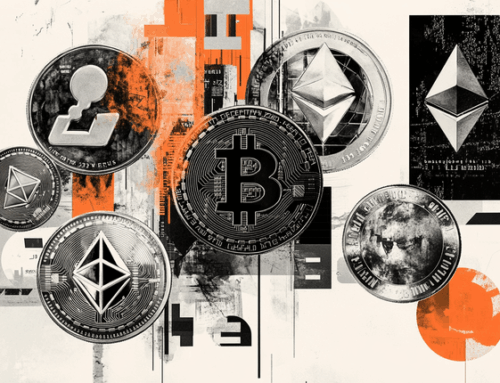4 Reasons to Buy Bitcoin Before 2028 @themotleyfool #stocks $BTC
June 11, 2025
The world’s top cryptocurrency is still a reliable long-term investment.
Bitcoin‘s (BTC 0.04%) price has risen nearly 240% over the past three years, even as rising rates and the implosions of several big tokens and exchanges chilled the crypto market. Bitcoin survived that sell-off, which wiped out many of the smaller altcoins and meme coins, and it emerged as the safest “blue chip” cryptocurrency to invest in.
In 2024, Bitcoin’s first spot price ETFs were approved, and its latest “halving” reduced its mining rewards. President Trump’s victory in November also drove many investors back toward Bitcoin, since his administration adopted more crypto-friendly policies than the Biden administration. President Trump also ordered the establishment of a Strategic Bitcoin Reserve and a U.S. Digital Asset Stockpile this March, while declining interest rates generated additional tailwinds for the broader crypto market.

Image source: Getty Images.
As Bitcoin hovers above $100,000 and trades just a few dollars below its record high, investors might be wondering if it’s time to finally take profits. However, some big institutions and investors expect its price to surge even higher over the next three years.
By 2028, Standard Chartered claims its price could soar to $500,000 as its volatility decreases and its ETFs lock in more investors, while Maelstrom’s Arthur Hayes expects its price to surge to $1 million as the devaluation of the U.S. dollar drives investors toward more alternative assets.
We should take those bullish estimates with a grain of salt, but I personally think it could be wise to buy Bitcoin before 2028 for four simple reasons.
1. The next Bitcoin halving
Bitcoin underwent four halvings in 2012, 2016, 2020, and 2024. Each time those rewards were cut in half, it became increasingly difficult to mine Bitcoin for a profit. Back in 2012, traditional desktop GPUs could still be used to mine Bitcoin. But today, miners need to use powerful application-specific integrated circuits (ASICs) instead of GPUs.
Before its first halving, Bitcoin had a block reward of 50 tokens for each block they created. But after its four halvings, that “block reward cut” dropped to just 3.125 Bitcoins.
The rising difficulty of mining Bitcoin will tighten its supply and slow down its production as it inches toward its maximum supply of 21 million Bitcoins. Approximately 19.7 million of those coins have already been mined, and the last one is expected to be mined in 2140.
Bitcoin was trading at $63,800 right before its latest halving on April 19, 2024. It’s risen nearly 70% since then, so it might be smart to load up on Bitcoin before its next four-year halving — which is expected to occur in March or April 2028 and cut its block reward to just 1.5625 Bitcoins.
2. Declining interest rates
Bitcoin’s price slumped in 2022 and 2023 as rising rates drove investors away from cryptocurrencies and other speculative plays. But in 2024, its price stabilized and rose again as the Federal Reserve cut its benchmark rates three times. The Fed hasn’t cut its interest rates again in 2025, but it’s still expected to execute at least two rate cuts this year.
As interest rates decline, Bitcoin’s price should rise as more investors pivot back toward the crypto market. Declining interest rates should also weaken the U.S. dollar — and that trend could cause more investors to stock up on Bitcoin, gold, and other “safe-haven” assets.
3. Its growing adoption as a national currency
Only two countries, El Salvador and Central African Republic, have adopted Bitcoin as a national currency so far. However, other nations facing severe inflation, currency devaluation issues, sanctions, and debt problems could follow their lead. If that happens, Bitcoin could gain more momentum as a global alternative to fiat currencies.
4. Rising institutional ownership
Most institutional investors with exposure to Bitcoin only allocate low-single-digit percentages of their portfolios to the cryptocurrency. But that could shift over the next few years as traditional investment firms like Fidelity, Schwab, and BlackRock add more support for Bitcoin across the retail brokerages and retirement accounts.
Assuming those institutional investors start allocating more than 5% of their portfolios to Bitcoin, its price could skyrocket and ignite another “fear of missing out” (FOMO) buying frenzy. If that happens, the market’s leading Bitcoin ETFs should attract more institutional investors who don’t want to deal with the risks of directly holding the cryptocurrency in a digital wallet. Other countries — including the U.K., Australia, and major Asian markets — could also approve their own spot price ETFs for Bitcoin.
Should you buy Bitcoin right now?
Bitcoin will remain volatile for the foreseeable future, and I’m not certain it can hit $500,000 or $1 million by 2028. But it should attract more attention from before its next halving, and there’s still plenty of room for institutional investors to accumulate more Bitcoin. So if you can stomach its wild swings, it’s still a great time to buy more Bitcoin.
Search
RECENT PRESS RELEASES
Related Post


